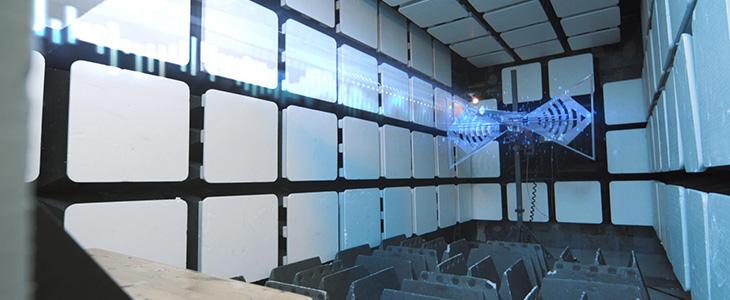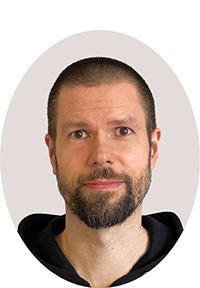How to Optimize Radio and Antenna Performance of IoT Devices

How to Optimize Radio and Antenna Performance of IoT Devices
Author: Juha Katajisto, Principal Engineer, Bittium
Connected devices have found their way into nearly all areas of our daily life – from receiving the morning news via a mobile device, driving a connected car, using connected devices at work, remotely regulating the heating at home to monitoring one’s daily physical activities and vital signs via wearables. The increasing number of connected devices and the proliferation of smartphones and their applications have contributed significantly to the rise of IoT. Rising adoption of cloud platforms, development of cheaper and smarter sensors, and evolution of high-speed and low-energy networking technologies will continue to drive the future market growth.
The application scenarios for IoT devices and solutions are widespread but what always remains there when developing new devices is the need for expertise in radio and antenna technologies. As R&D experts for multitude of IoT devices, we can shed some light on the different aspects that result in optimally connected devices.
Multiple Radio Technologies
Know-how of radio technologies is a key expertise in the design process – no matter what the market and end-use is. For example, developers must have know-how on practically all the wireless protocols from GNSS to Bluetooth Low Energy (BLE) and from LTE Cat-M/Narrowband-IoT (NB-IoT) to 5G, including custom radio system development. Projects can cover both chipset and module-based designs. Chipset-based implementations enable customization for product needs and a lower Bill of Material cost. Module-based designs are fixed in hardware but save time and effort in product design and certifications.
In order to provide the requested features, the designs must also take into account radio interoperability for example between LTE, GPS, and BT. Typically, the challenge is that the transmitter of one radio blocks the simultaneous reception of another. Coexistence of different radios can be handled in several domains, often using some kind of combination of time, frequency, and/or space. The radios can be synchronized in time domain in case there is some margin in throughput requirements. Coexistence filtering can be utilized in order to get enough attenuation in frequency domain for an unwanted frequency band. The antennas of different radios must be placed in spatial domain so that isolation between the radios is maximized.

Antenna Design & Integration
In addition to the radio core, a wireless IoT device of any kind needs to have an antenna to be connected. The antenna can be internal or external, depending on the purpose or placement of the device. In general, external antennas provide better performance, but bring along specific challenges, especially for wearable devices. In such cases, internal antenna is usually a better choice and the antenna‘s design and integration are important factors for the performance of the IoT device.
Internal antennas can be commercial off-the-shelf (COTS) or custom built. Use of COTS antennas enables faster development without additional engineering effort but requires knowledge of the original antenna design and operating environment the antenna was designed for. This sets certain boundary conditions for antenna performance, not to mention other electronics that are built around the antenna. Depending on the case, the best possible antenna performance may be achieved with a custom-built antenna.
Wearable or embedded IoT devices are usually relatively small which poses challenges to the obtainable antenna performance. Such devices need an internal antenna, and it is usually thought of as only a small part of the device that can be placed wherever there is space left. Although the antenna is physically a small part of the device, challenges arise from the way the internal antenna works.
The internal antenna operates at certain allocated frequencies (translates to wavelength). Depending on the frequency, the antenna uses the electrical ground plane of the device as part of the radiating element i.e., the antenna. When the entire ground plane of the device acts as part of the antenna, the size of the device also limits the available antenna performance. The fact that the physical size of the product limits internal antenna performance can be optimized by utilizing antenna tuner concept. This means that the antenna matching component values are dynamically tuned depending on the instantaneous operating frequency.
In the case of wearable devices, the placement of the device and its internal antenna very close to the body brings its own challenges to the performance and optimization of the antenna. The antenna efficiency is heavily impacted as the human body attenuates radio waves. This reduction in antenna performance needs to be minimized during the design process to achieve the required wireless operation range for the device. However, an antenna inside a wearable device should also meet specific absorption rate (SAR) limits. The key is to have the right know-how from all the relevant aspects for achieving optimized antenna design.
In order to streamline the antenna design process to achieve the optimal results, antenna simulations should be started as soon as the first draft of the product concept is available. In some cases, antenna simulations are used already in defining this first product concept draft.

EMC Between IoT Device and Connected System
Electromagnetic compatibility (EMC) is in a key role for example in industrial wireless applications where a wireless device is physically connected to a host system or accessories. The stand-alone wireless device may work well, as well as the stand-alone host, but when connected together – not. These kind of integration challenges must be understood and taken into account already in the early phases of the design process.
EMC compatibility design can be related to regulatory compliance, or it can be just performance optimization. Regulatory compliance can be roughly split into emissions and immunity. For example, a device can transmit energy on a certain unwanted frequency at too high a level when it is connected to a charger, even if both meet the emission limits when tested alone. Another example is immunity, where a device has to be able to still maintain the required operation while an external radio frequency interferer is present. A typical example of internal performance optimization of a device is to remove system clock harmonics or charger wideband noise from the receiving signal path, thus achieving the expected radio sensitivity and operation range when self-interference is eliminated. These kind of design challenges are typically solved by adding appropriate filtering to the design or modifying layout design to remove the access of harmful frequencies to the critical parts of the design.
Conclusions
Radio and antenna design, along with EMC compatibility, are some of the most important aspects that need to be considered when designing an IoT device. Additional aspects can include market specific requirements, thermal management issues, and security features for both hardware and software. Working with a development partner like Bittium who has specialized knowledge on the different topics, offers joint and transparent development models, fast and cost-efficient production testing, as well as support for the whole product lifecycle, can accelerate the development of new IoT solutions enormously and save costs.
***
Read more about the engineering services we offer for IoT solutions
Missed our previous IoT related blog post? Learn how Rethinking the Production Testing of IoT Devices has improved efficiency and brought cost savings for both us and our customers.
Juha Katajisto, Principal Engineer, Bittium
Juha Katajisto has 20 years of professional experience in RF technologies, and dozens of served customers from various industries. Juha has been working with wireless device development from early smartphones to novel medical devices. Juha’s approach is to maintain best practices while also taking the most promising new tricks into use. This has made him face new wireless challenges always with the same passion and precision. He is currently leading RF/HW activities in medical product development, while also keeping an eye on present and future customer projects.
